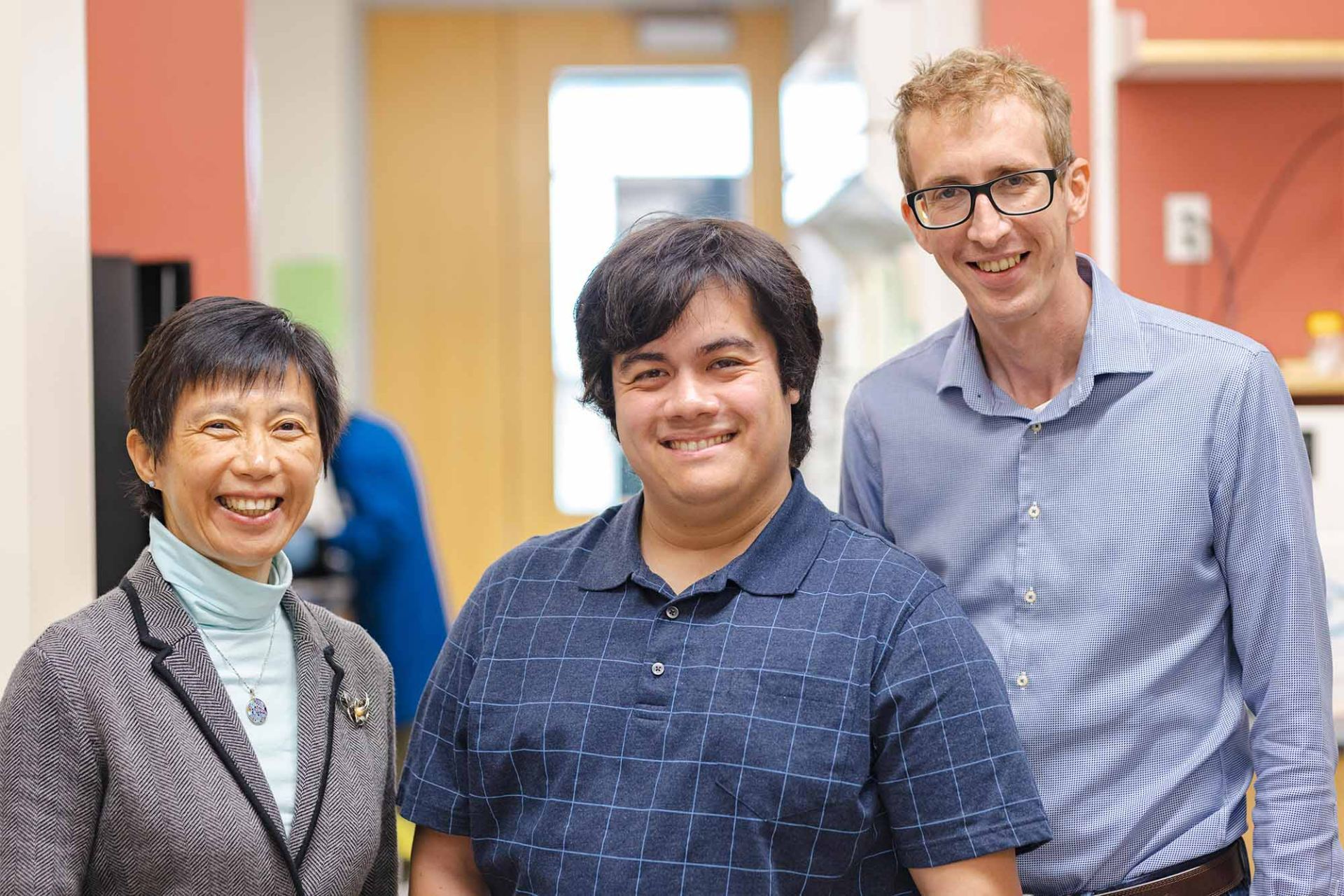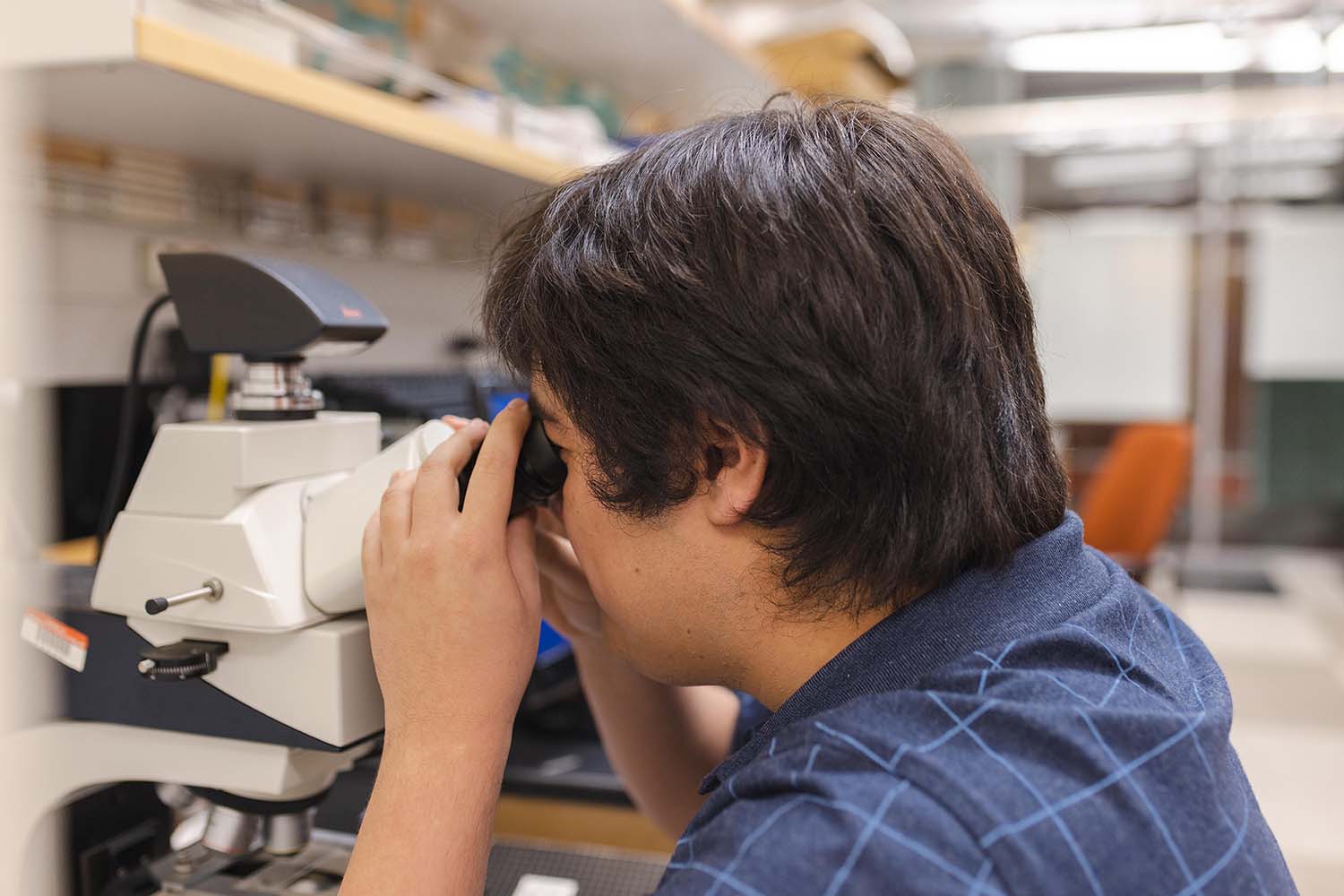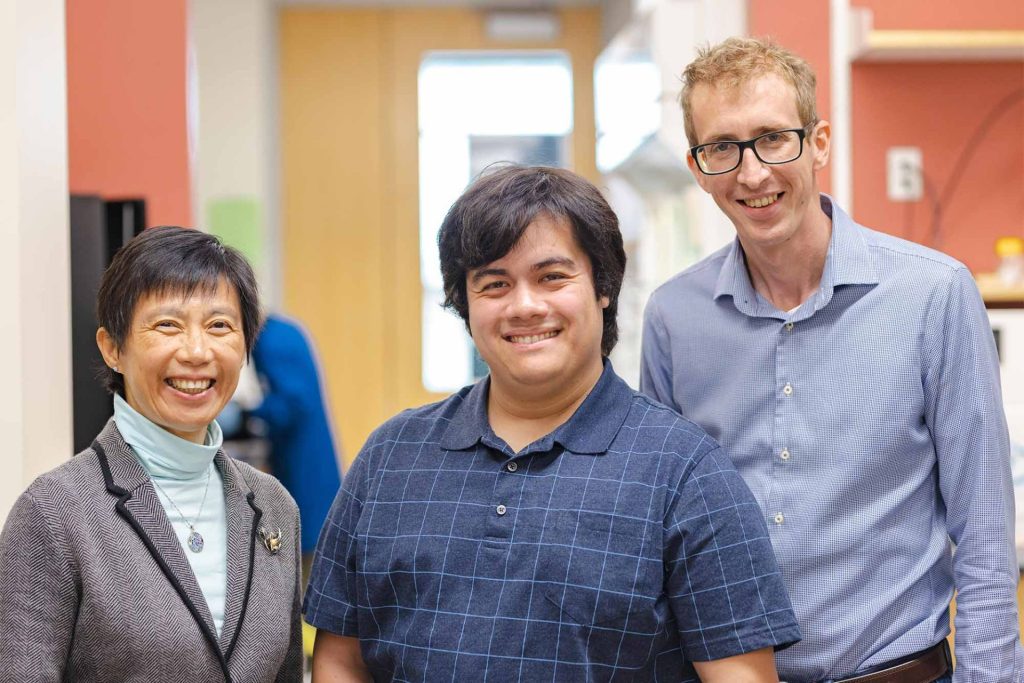
A team of University of Texas at Dallas researchers has discovered a “recipe” to increase the efficiency of solar cells made from organic materials.
The researchers published their study, a combination of experimental and theoretical investigations, in the Dec. 1 print issue of Nano Energy.
Solar panels, which generate electricity from solar radiation, could be a key factor in solving the global energy crisis, said Dr. William Vandenberghe, associate professor of materials science and engineering in the Erik Jonsson School of Engineering and Computer Science and a corresponding author of the study. Currently less than 3% of the electricity in the U.S. and less than 5% in Texas is generated using solar panels, according to the U.S. Energy Information Administration.
“If solar panels covered half a percent of the land in the U.S., they alone would be able to meet all our electricity needs,” Vandenberghe said. “The main roadblock to an expansion of the capacity of solar power is that solar panels remain too expensive.”

Organic solar cells (OSCs) could reduce the cost of solar panels because they are made with organic polymers and molecules instead of silicon. Although silicon is abundant in sand, purifying sand into high-grade silicon is a complex, costly and energy-intensive process. Most organic solar cells, however, are not as efficient as those made with silicon for reasons that are not well understood.
Solar cells generate electricity by absorbing light particles, or photons, which energize electrons from their host atoms as part of a process that generates an electrical current.
Organic solar cells, which are more flexible and lightweight than silicon panels, are made of two materials: One is an electron donor, and the other is an electron acceptor.
“Optimizing the efficiency of these solar cells is like creating a new cake recipe — it involves a knowledgeable cook who knows how to tweak the ingredients, plus a bit of trial and error,” Vandenberghe said.
Early versions of organic solar cells, which were made of 50% donor and 50% acceptor materials, have drawbacks. The new cells, called dilute-donor cells, include as little as 1% to 5% donor material — like a few chocolate chips in a cake mix — and show promise for yielding high voltage and high current.
“Optimizing the efficiency of these solar cells is like creating a new cake recipe — it involves a knowledgeable cook who knows how to tweak the ingredients, plus a bit of trial and error.”
Dr. William Vandenberghe, associate professor of materials science and engineering in the Erik Jonsson School of Engineering and Computer Science
The findings are a result of a collaboration between Vandenberghe and co-corresponding author Dr. Julia W.P. Hsu, professor of materials science and engineering and holder of a TI Distinguished Chair in Nanoelectronics at UT Dallas. In a project funded by the National Science Foundation, Hsu and Vandenberghe have been investigating how dilute-donor organic solar cells work and how to advance the technology. Hsu has conducted extensive research into solar energy, including on solar cells made from another material called halide perovskite.
“We need to have a portfolio of different types of renewable energy,” Hsu said.
Hsu’s experiments found differences in the efficiency of organic solar cells made with two types of donor molecules, but it was not clear why one performed better.

To learn more about how UT Dallas is enhancing lives through transformative research, explore New Dimensions: The Campaign for UT Dallas.
Using computer simulations, the team discovered that they could make organic solar cells more efficient if they changed the shape of the donor material, or “chocolate,” from chips to strands.
“Strands work better for moving the charge through the cell,” Vandenberghe said. “We also found that it works better if the chocolate strands are at the top.”
The lead author of the research paper, Aaron Kramer MS’18, PhD’22, who earned his UTD degrees in physics, conducted a six-month internship at the Air Force Research Laboratory headquarters at Wright-Patterson Air Force Base, where he learned about theoretical modeling of organic materials and then applied his experience to the UTD project.
“I had to form hypotheses and apply educated guesses into the simulation to reproduce Dr. Hsu’s experimental findings,” Kramer said.
While more research needs to be done to make organic solar cells viable, the UTD team’s findings advance a less understood property of organic solar cell technology called the fill factor, the ratio of the amount of power the cell could theoretically obtain to the actual current.
Additional contributors to the research include Boya Zhang PhD’22 and Lakshmi N.S. Murthy MS’17, PhD’21, who now works at Intel Corp. Researchers at the Giulio Natta Institute of Chemical Sciences and Technologies in Italy and the Technical University of Munich also contributed. High-performance computing resources at the Texas Advanced Computing Center at UT Austin contributed to the results.
